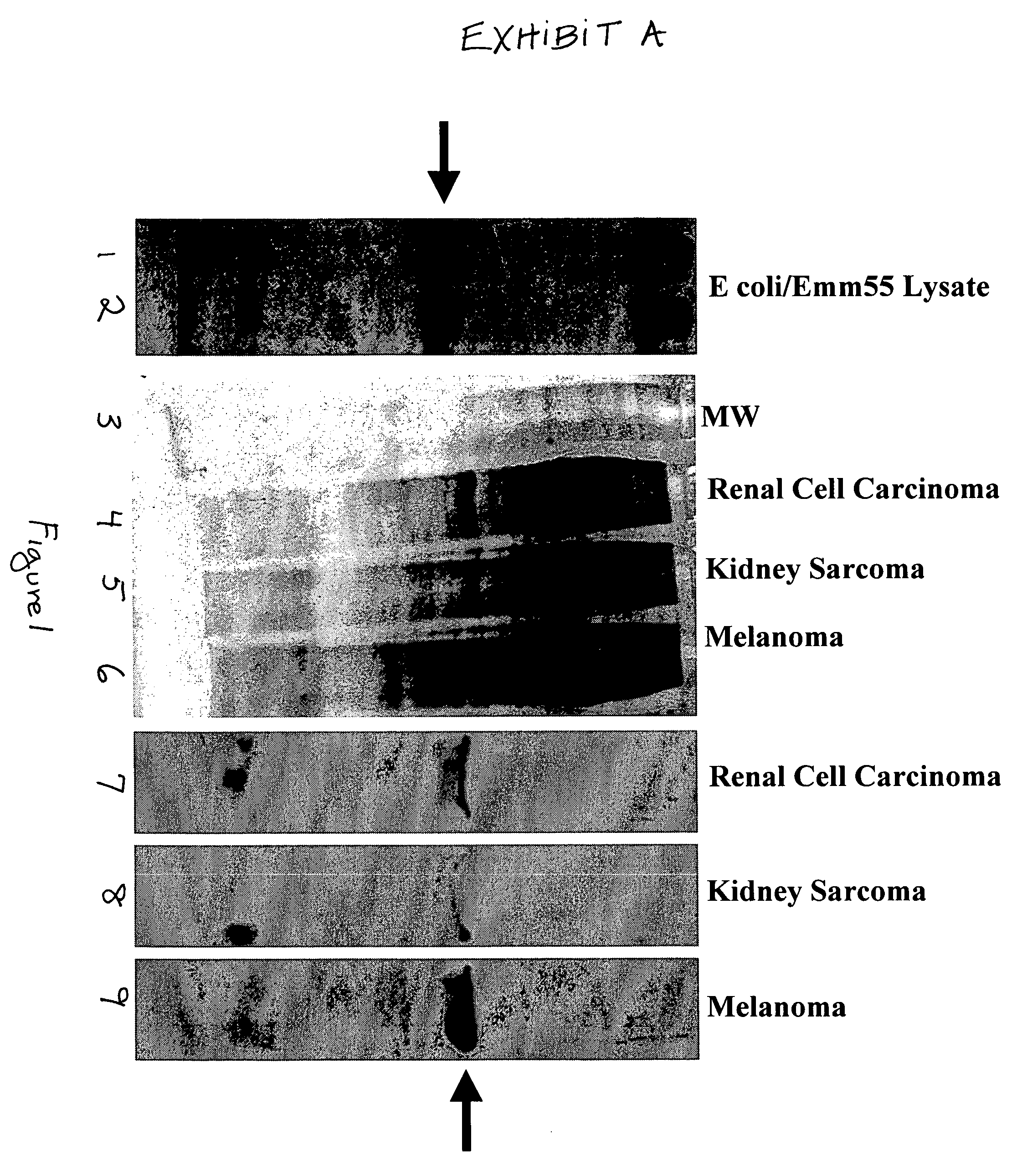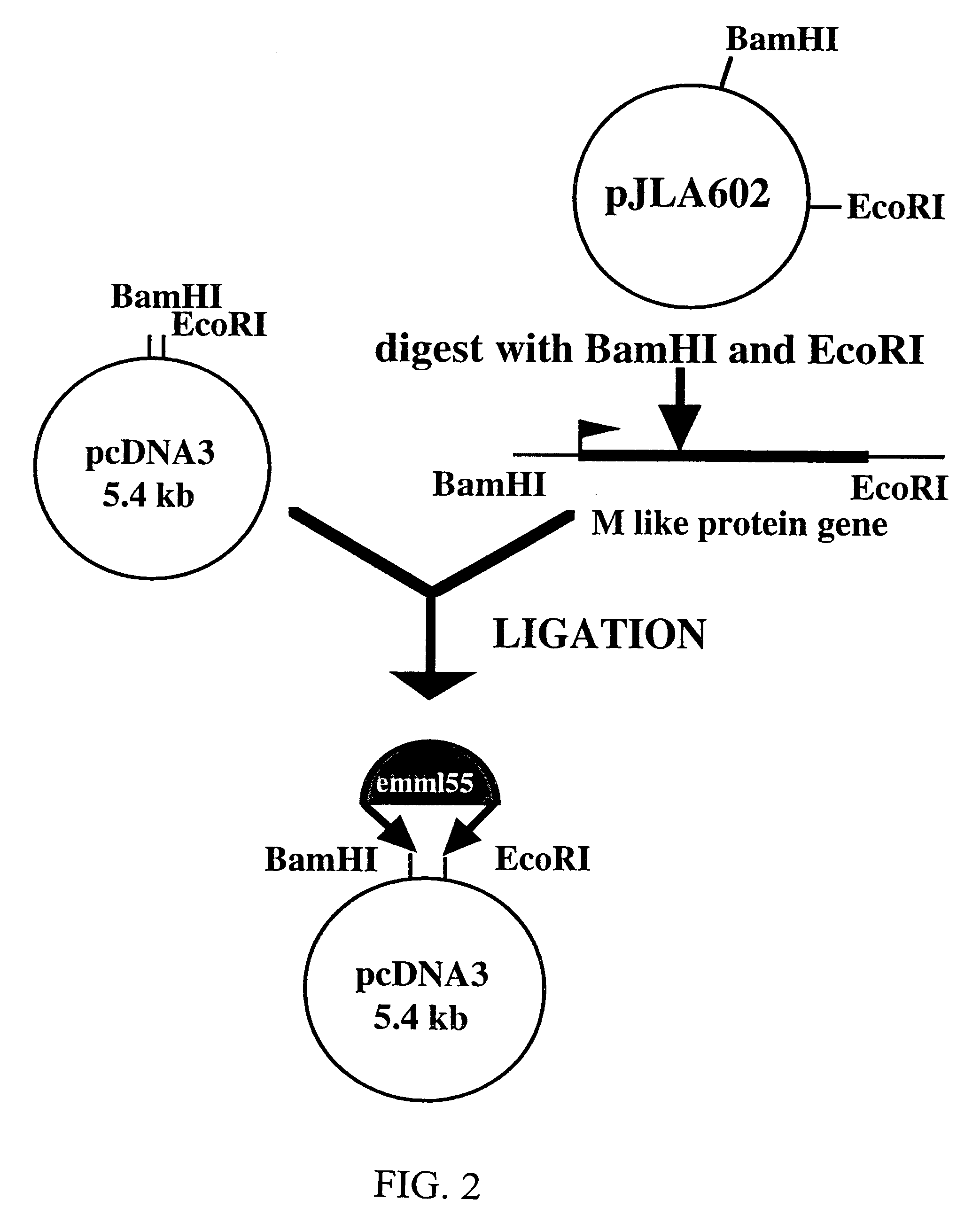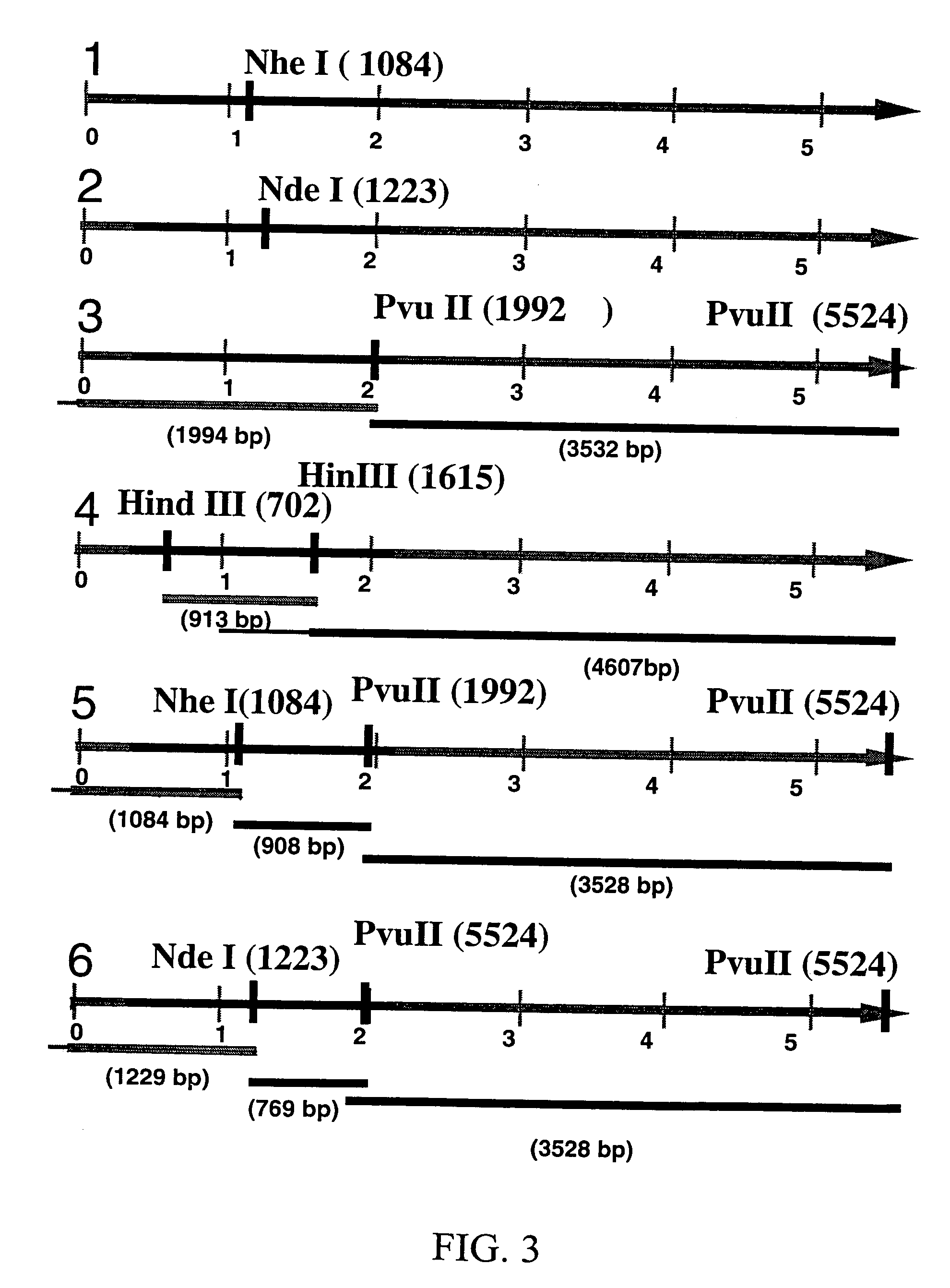Materials and methods for treating oncological disease
a technology for oncological disease and materials, applied in the field of materials and methods for treating oncological disease, can solve the problems of mutagenic events, insufficient addition of normal genes, and inability to readily detect the potential of gene therapy for the treatment of malignancies
- Summary
- Abstract
- Description
- Claims
- Application Information
AI Technical Summary
Benefits of technology
Problems solved by technology
Method used
Image
Examples
example 1
Tumorgenicity of Neuro-2a in A / J Syngeneic Mice
[0078]Neuroblastoma cells were highly tumorigenic in A / J syngeneic mice. Visible tumors appeared at the site of inoculation after a variable latency period. The duration of latency was dependent upon the number of cells injected (Table 1). Injection of 3×106 and 1×106 cells caused tumor formation in 100% of the mice tested, and in these cases, the latency period was 7–20 days. Eighty percent of the mice injected with 5×105 and 1×105 cells developed tumors within 10–28 days. Once the tumors appear, they grew rapidly and their size was not dependent on number of cells originally injected.
[0079]The tumors grew under the skin, invaded the surrounding muscle tissue and approached 75% of the weight of the mouse. Resected tumors were soft and well vascularized; angiogenesis of blood vessels was evident. Additionally, in some mice secondary tumor formation was observed. The overwhelming size of the malignant tissue caused necrosis in some of th...
example 2
Construction and Analysis of the pCR II / emmL 55
[0080]In order to subclone the emmL 55 gene into pSVK 3, emmL 55 was amplified from the parental vector, pJLA 602 and restriction sites necessary for subcloning were added to the ends of the amplified product. Agarose gel electrophoresis of the emmL 55 PCR product showed that the size of amplified gene was 1.6 kb and the amount of the amplified product was 8 ng per 1 μl of the TE buffer.
[0081]One Shot INFVαF′E coli. competent bacterial cells were then transformed with pCR II / emmL 55. Bacterial clones were screened for the presence of the recombinant construct by white / blue selection. One clone showed the expected size 5.5 kb and was chosen for restriction analysis. The pCR II / emmL 55 construct, when digested with Eco RI and Xho I restriction enzymes, released the emmL 55 gene. Agarose gel electrophoresis of the digested product show the expected band pattern, 1.6 kb for emmL 55 and 3.9 kb for the pCR II vector. The amplified emmL 55 gen...
example 3
Construction and Analysis of pSVK 3 / emmL 55
[0082]From the 20 analyzed bacterial clones, transformed with the pSVK 3 / emmL 55, four clones with 5.5 kb size were selected and digested with restriction enzymes. Three out of four clones transformed with pSVK 3 / emmL 55 exhibited the expected banding pattern and one was used for the subsequent analysis. pSVK 3 / emmL 55 when digested with Nhe I and with Nde I generated a 5.5 kb band as expected. Digestion with Pvu II yielded a 2 kb and a 3.5 kb band and digestion with Hind III generated two bands, 0.9 kb and 4.6 kb. Double digestion with Pvu II and Nhe I resulted in three bands of approximately 1 kb, 2 kb and 5.5 kb pairs and digestion with Pvu II and Nde I generated three bands, 0.77 kb, 1.2 kb, and 3.5 kb (FIG. 3). Restriction analysis of pSVK 3 / emmL 55 revealed that the recombinant construct had the expected size (5.5 kb) and the expected map.
[0083]In order to confirm that the correct product was amplified, sequence analysis was performed...
PUM
| Property | Measurement | Unit |
|---|---|---|
| pH | aaaaa | aaaaa |
| final volume | aaaaa | aaaaa |
| final volume | aaaaa | aaaaa |
Abstract
Description
Claims
Application Information
 Login to View More
Login to View More - R&D
- Intellectual Property
- Life Sciences
- Materials
- Tech Scout
- Unparalleled Data Quality
- Higher Quality Content
- 60% Fewer Hallucinations
Browse by: Latest US Patents, China's latest patents, Technical Efficacy Thesaurus, Application Domain, Technology Topic, Popular Technical Reports.
© 2025 PatSnap. All rights reserved.Legal|Privacy policy|Modern Slavery Act Transparency Statement|Sitemap|About US| Contact US: help@patsnap.com



